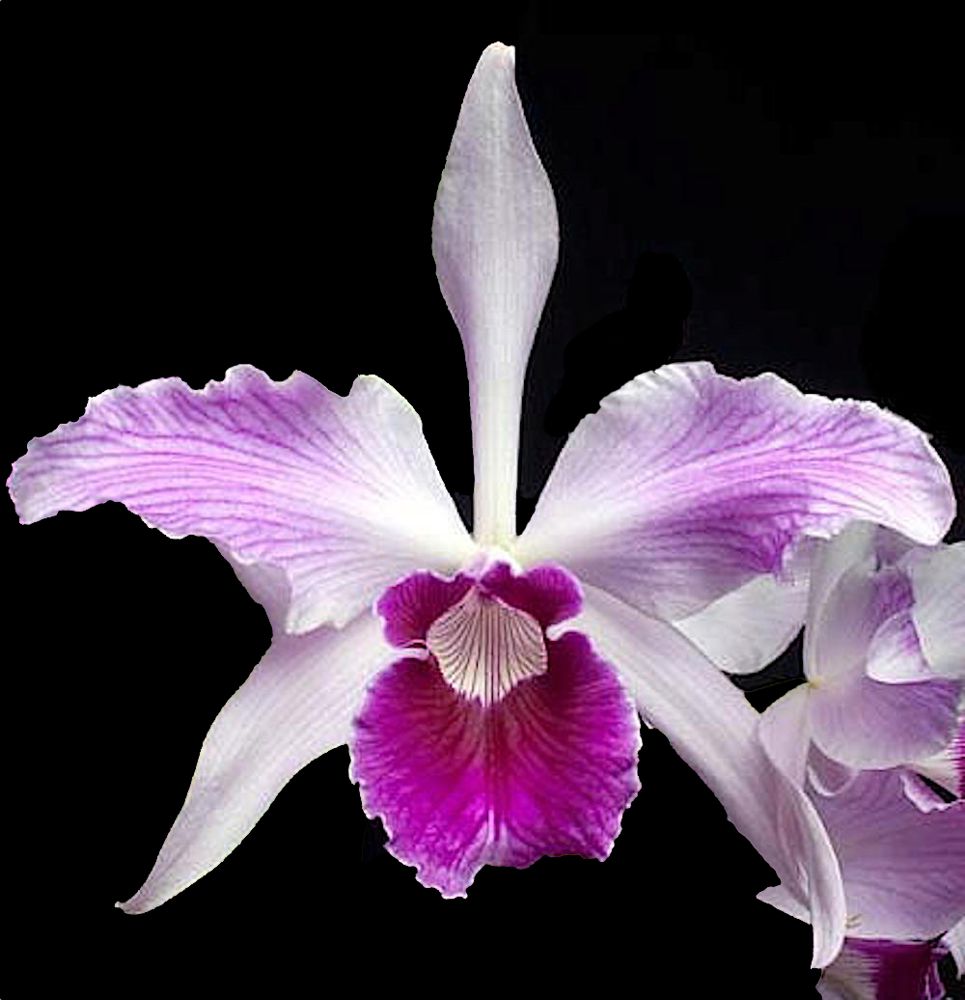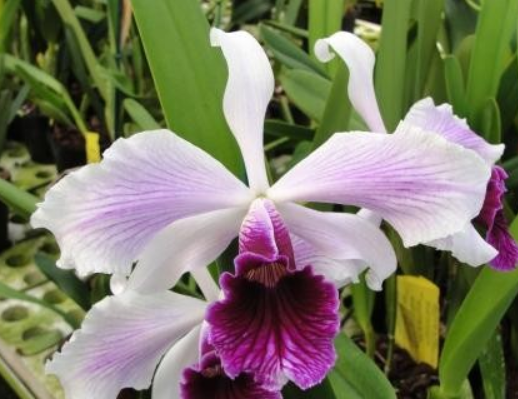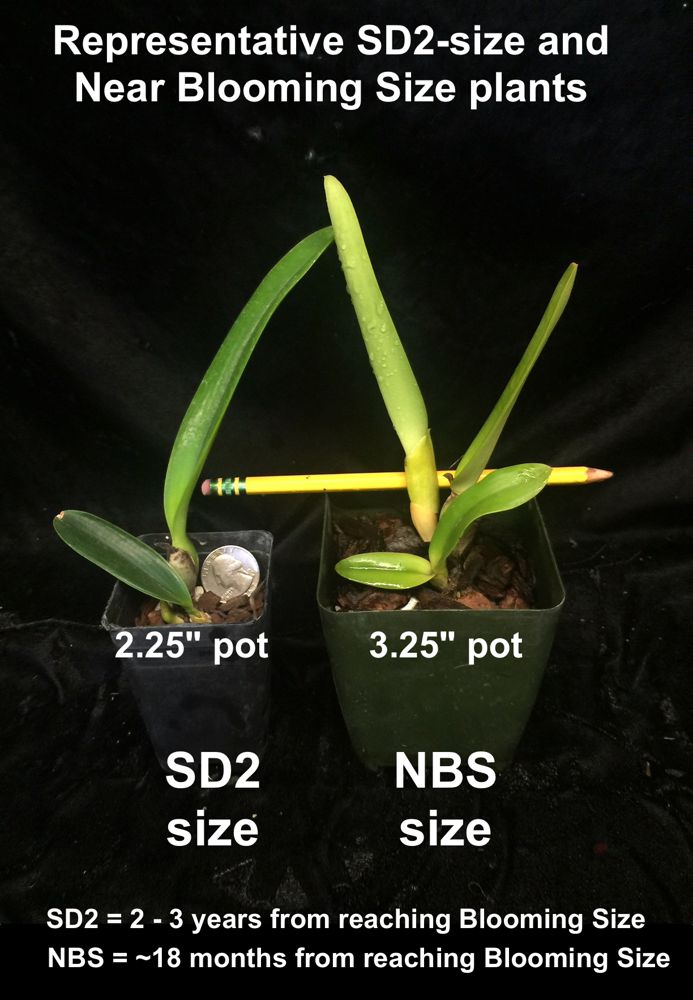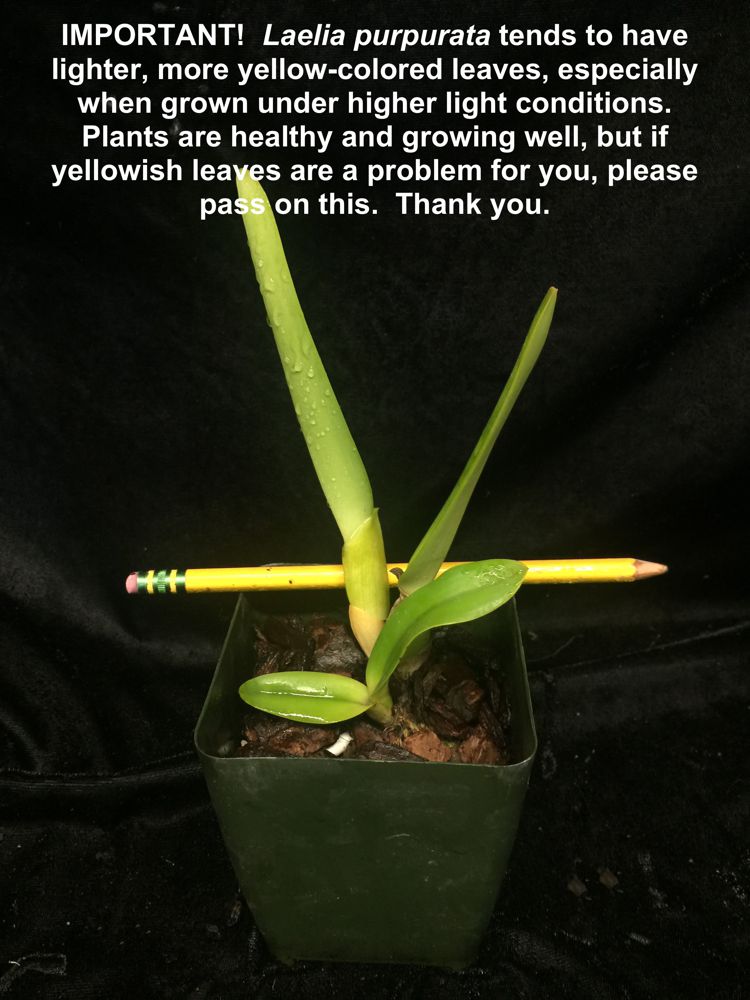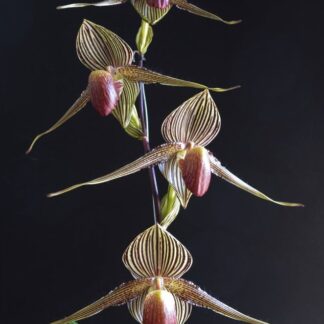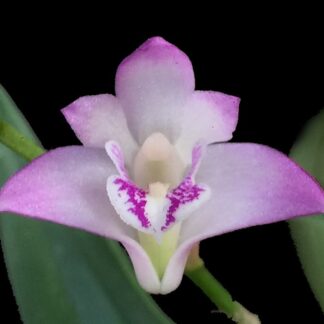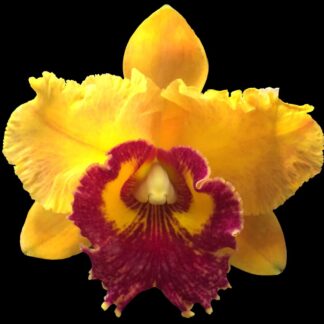Description
IMPORTANT NOTE: Leaves may look a bit yellow, but this is natural and the result of growing under higher light conditions. Plants are healthy and growing well. If slightly yellow leaf color is a concern for you, please pass on this. Please look carefully at the plant photos and the size reference so you know what size plant you’re getting!
If you’re having trouble falling asleep at night, a great way to bring on a deep slumber is to review the arguments botanists have had over the last 200 years about what constitutes a true Cattleya, Laelia, or Sophronitis. I guarantee you’ll fall asleep in no time (or end up with a big headache).
Laelia purpurata is one of the most sought after of this grand family of Cattleya-ish orchids. The genus Laelia was created in 1831 on the basis of just one plant found in Mexico. It had eight pollinia (i.e., pollen grains), whereas Cattleyas have four. At the time, this difference was sufficient to warrant establishing a new genus, Laelia. Then in 1852, the same guy (Lindley) classified a species from Brazil (where Cattleyas come from) as a Laelia because this thing also had eight pollinia, like the aforementioned plant from Mexico. He called it Laelia purpurata, and it’s the one we’re offering right here. Of course, it really is a Cattleya because it looks like one, grows like one, and practically quacks like one, but just happens to have eight pollinia instead of four.
So for those of you entering the jungles of the orchid world, this is what orchid botanists, collectors, obsessives, and nuts get into, so welcome, and try not to get caught in the extremely tedious crossfire.
Laelia purpurata is really Cattleya purpurata, but we’re going to stick with Laelia for now, as that’s how it’s been known for nearly 200 years. We acknowledge the science, but more to the point, we acknowledge the importance of names to effective marketing.
One of the great things about Laelia purpurata is the many different forms out there. There are deeply colored ones, striped ones, blue-ish ones, rose-colored ones, to name a few. We’re offering here Laelia purpurata var. striata, which produces colored stripes on its petals.
And finally, orchid fans, we’re offering something quite uncommon: all of these Laelia purpuratas are grown from seed, as genetically distinct as any person (barring identical twins and the like). They are all sure to be very nice, but some will prove absolutely stellar, and prize-worthy (and hence worth hundreds or thousands of dollars). It is quite common for Cattleyas (and many other prized types) to sell for $1000 – $10,000+ for a single plant.
How to grow Cattleyas:
1) Bright light (although avoid prolonged direct sun)
2) Water once to twice a week during the growing season; let dry between waterings
3) Use chunky bark for plenty of aeration at the roots (or grow them mounted)
4) Fertilize twice per month
5) Avoid temps below 50 F; temps into the 90s F or even over 100 F are tolerable if kept shady and well-watered
